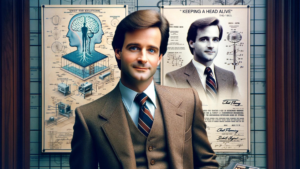In the annals of history, there are inventions that have transformed our lives—innovations like the light bulb, the automobile, and the internet. But what about the inventions that didn’t make the headlines? Hidden in the shadows are some of the quirkiest and most fascinating creations, ones that didn’t quite make it into the mainstream. This blog will take you on a journey through the forgotten annals of creativity, exploring the inventions that time forgot and the brilliant minds behind them.
The Revolving Bridge
Imagine a bridge that could be packed up and transported, a mobile connection for armies and explorers alike. This was the vision of Leonardo da Vinci, the quintessential Renaissance man, who sketched the design of the Revolving Bridge in the late 15th century. This portable bridge was intended to be quickly assembled and disassembled, providing troops with a strategic advantage. Made primarily of wood, da Vinci’s design featured a swiveling mechanism allowing for rapid deployment across rivers.
Though never built in his lifetime, models based on his sketches have demonstrated his forward-thinking engineering. Da Vinci’s Revolving Bridge reminds us of his genius not only in art but in innovative engineering.

Radio Hat
In the flamboyant era of the 1930s, when fashion began to flirt with functionality, the Radio Hat made its debut. Invented by Victor Hoeflich, this peculiar hat was essentially a portable radio built into a straw hat, complete with an antenna and earphones that allowed the wearer to listen to AM stations on the go. Marketed as a novelty item for beach-goers and sports fans, the Radio Hat was a sensation in newspaper advertisements.
However, its bulky design and the advent of more practical portable radios soon turned it into a mere fashion footnote. Nonetheless, the Radio Hat was a whimsical precursor to the wearable technology we use today.
Steam Man
Long before robots and automatons became staples of science fiction, an inventor named Zadoc P. Dederick came up with the Steam Man in 1868. This mechanical marvel, powered by steam, was designed to pull carts and carriages, potentially replacing horses. The Steam Man was a hulking figure made from metal, with a boiler for a torso and articulated limbs that mimicked human movement.
While it attracted considerable attention and curiosity, the practical limitations of steam technology at the time—coupled with its imposing, somewhat eerie appearance—prevented it from becoming more than a curious experiment. Yet, Dederick’s vision of mechanical labor was remarkably prescient, echoing today’s advances in robotics.

Glass Armonica
The ethereal sounds of the Glass Armonica, invented by none other than Benjamin Franklin, once enchanted audiences across Europe. Franklin, inspired by musicians playing glasses filled with water, invented this instrument in 1761. The armonica consisted of glass bowls of different sizes, mounted on a spindle and played by touching the rims with wetted fingers.
Despite its initial popularity, concerns about the health effects of the leaded glass and the eerie tones it produced led to its decline. The instrument’s hauntingly beautiful music, however, continues to resonate in certain classical and experimental music circles.
Conclusion
These forgotten inventions, from da Vinci’s Revolving Bridge to Franklin’s Glass Armonica, highlight not only the limitless creativity of their inventors but also the whimsical paths that innovation can take. While not all inventions find their place in the mainstream, they each add a fascinating chapter to the history of human ingenuity. As we look back on these quirky creations, we celebrate the spirit of innovation that continues to drive us forward.

This exploration into the world of forgotten inventions reminds us that sometimes, the most interesting stories are the ones hidden in the footnotes of history.
Author’s Note:
Thank you for joining me on this journey through the intriguing world of inventions that didn’t quite make the historical headlines. Each invention we explored not only reflects the ingenuity of its creator but also the times in which it was conceived. I hope this blog inspires curiosity and appreciation for the lesser-known paths of innovation and creativity. As always, I invite your thoughts and discussions on these historical oddities.
G.C., Ecosociosphere contributor.
References and Further Reading:
- “The Innovators” by Walter Isaacson – A detailed exploration of the digital revolution and the people who made it happen, providing context to the ever-evolving landscape of technology.
- “Steampunk: An Illustrated History of Fantastical Fiction, Fanciful Film and Other Victorian Visions” by Brian J. Robb – Delves into the steampunk genre and its roots in historical inventions like the Steam Man.
- “Leonardo da Vinci” by Walter Isaacson – A biography that offers insights into da Vinci’s inventive genius, including his lesser-known projects like the Revolving Bridge.




